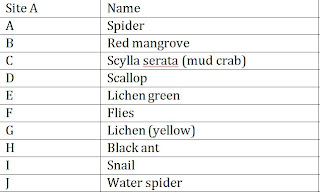We
are always in a constant search. You may be on a search for your dreams, money,
or even your loved ones. Well not for the chaps at the Erasmus Medical Center!
Their researchers in the Department of Biology concerning stem cells have found
some rather interesting information. Their findings are still in their infancy
age and may not provide immediate breakthrough, however for future research, it
is invaluable. Soon, their results may save many lives when pharmaceutical
companies decide to create a medicine from their findings.
Stem
cells are cells that differentiate into specific cells that have their own role
in maintaining the organism. The peeps at the Department of Biology have been
using mice as test subjects. By using Vivo imaging, they were able to find
hematopoietic cells in the dorsal aorta at the start of the mice embryonic
stage. That was a mouthful to say. Let’s break that down shall we? Vivo imaging
is the process used in order to monitor the functions of the cell and its
molecular process. Hematopoietic cells are multipotent stem cells. As in, they
are undifferentiated stem cells that are able to self-renew them self and
differentiate into specialized cells with specific functions. Let’s look at
multipotent’s etymology. Multi as in the stem cell can differentiate into
different cells and potent as in its potential to differentiate into different
specialized cells. Therefore, Hematopoietic cells are undifferentiated cells
that can differentiate to all blood cell types. The Hematopoietic cells are
responsible for blood production in the adult mouse. Next, the dorsal aorta is
the vein from the yolk sac during the embryonic stage. So by using a process to
view the molecular activity of mice during its embryonic stage, the researchers
were able to find undifferentiated stem cells in the veins of the mice that is
capable of differentiating into a specialized blood cell.
The
researchers cut embryonic slices and put them under the microscope to catch the
hematopoietic cells in action. There are 2 protocols in doing the experiment. In
protocol A, they flush the lumen first, and then proceed for an antibody
injection. Then they slice the embryo and put it on a glass slide. The
researchers then set the temperature at thirty seven degree Celsius and five
percent Carbon dioxide and air atmosphere. Protocol B is very similar to
protocol A in terms of procedure. It also flushes the lumen, except it doesn’t
inject antibody. Then it also slices the embryo, however now it applies the
antibody stain on the embryo. The same temperature and air atmosphere is kept
for controlled variables.
Protocol A+B (top) Hematopoietic Cell's Location in mice (bottom)
Additionally,
Researchers from the Children’s Hospital, Boston, Massachusetts, USA found a
way to use the hematopoietic cells to cure the mice off its lethal radiation. This
is just the beginning. Once the technology has advanced, and the research in
this particular field has evolved, the same process can be done with humans,
and will cure and save many fortunate patients. The day hematopoietic cells
technology is moved into the human system, is the day where breakthroughs will
be popping like firecrackers.
To
help fasten up the research, modified mice can be created to create a setting
for experiments. The researchers can use a haploid embryonic stem cell instead
of a sperm to fertilize the immature egg cells. This haploid embryonic stem
cell only contains the genetic material from the male mouse. Not only does this
procedure enable easier reproduction of modified mice, we can also genetically
alter the haploid embryonic stem cell in order to satisfy our need for our
scientific research. The current procedures to produce genetically modified
mice are made from embryonic stem cells which contains two copies of every gene
from each of the mouse’s parent. It is a slow and uncertain process as the
offspring may not retain traits and genes from their parents that the
researchers require.

In
conclusion, the additional hematopoietic cell discovered in mice has a lot of
potential. It proved to us that it can ward off lethal radiation. By
genetically altering the haploid embryonic stem cell, we can obtain a more
precise modified version of the mouse to experiment on. In the future, the hematopoietic
cells may be able to move to the human system after extensive research with
genetics on hematopoietic cells until it is presumed safe enough to apply on
humans. The age of research in this area is still very young and developing.
Work Cited
Catherine Robin, et
al. "In Vivo Imaging Of Haematopoietic Cells Emerging From The Mouse
Aortic Endothelium." Nature 464.7285
(2010): 116. Science Reference Center. Web. 29
Apr. 2012.
Lyons,
Elisabeth. "From Embryonic Stem Cells, a Sperm Replacement and Easier Path
to Genetic Modification." EurekAlert! Cell Press, 26 Apr. 2012.
Web. 29 Apr. 2012.
<http://www.eurekalert.org/pub_releases/2012-04/cp-fes042312.php>.
SL,
McKinney-Freeman, Naveiras O, and Daley GQ. "Hematopoietic Stem
Cells." Isolation of Hematopoietic Stem Cells from Mouse Embryonic Stem
Cells. (2008). PubMed. Web. 29 Apr. 2012.
<http://www.ncbi.nlm.nih.gov/pubmed/18770632>.















